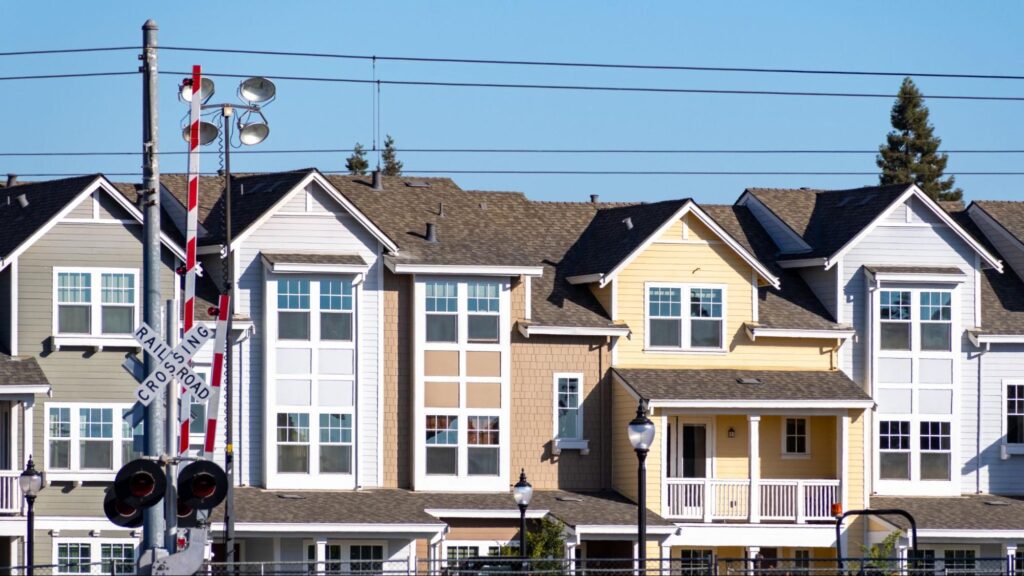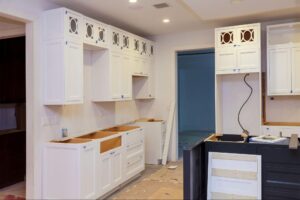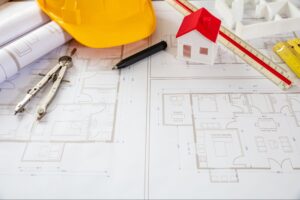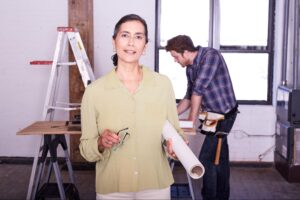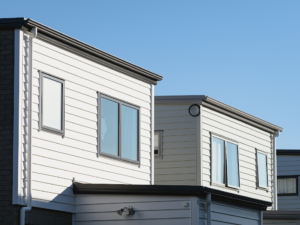Choosing the suitable siding material for your home is a crucial decision that affects more than just its appearance. The siding you select defines your home’s aesthetic and plays a significant role in its protection and durability. Homeowners often face the challenge of balancing cost, maintenance, and style when deciding on siding. A well-chosen siding material enhances your home’s beauty and boosts its value and longevity. By understanding the benefits and drawbacks of various siding options, you can make an informed decision, ensuring your home remains attractive and functional for years.
Evaluating Siding Benefits and Drawbacks
Choosing the best siding material for your home requires careful consideration of various factors. Each option offers unique advantages and disadvantages that can impact your home’s appearance, durability, and maintenance needs. Understanding these elements will help you make an informed decision that aligns with your priorities.
Vinyl Siding
Vinyl siding has become a household name in home exteriors due to its affordability and ease of installation. It offers various colors and styles, allowing homeowners to customize their home’s appearance, and maintenance is minimal; a simple wash can keep it looking new for years. However, vinyl siding can be susceptible to damage from weather and impacts, and over time, exposure to sunlight can cause the colors to fade. Additionally, there are environmental concerns related to the production and disposal of vinyl materials.
Wood Siding
Wood siding offers a timeless, natural beauty that many homeowners find irresistible. It provides excellent insulation and, when sourced responsibly, can be an eco-friendly option. The variety of wood types and finishes available allows for significant customization. However, wood siding demands regular maintenance to prevent rot and pest infestations, which can become costly and time-consuming. Moreover, the initial cost of wood siding is higher than other materials, adding to the overall investment required for installation and upkeep.
Fiber Cement Siding
Fiber cement siding is known for its strength and durability, making it a popular choice for long-term investments. This material stands out for its longevity, often lasting decades with proper care. It is resistant to fire, pests, and rot, providing peace of mind, and the variety of available styles and textures allows for a customized look. On the downside, fiber cement siding has a high installation cost due to its weight and the need for skilled labor. Handling and installation can be challenging, requiring periodic maintenance, including painting, to keep it in top condition.
Brick Siding
Brick siding is synonymous with durability and a classic aesthetic that always stays in style. It offers exceptional durability and requires minimal maintenance, withstanding harsh weather conditions, and providing a timeless look that can increase your home’s resale value. However, the cost of both materials and installation is relatively high, and brick has limited insulation properties, which might necessitate additional measures for energy efficiency. Additionally, color options are relatively limited compared to other siding materials, which can restrict customization.
Stucco Siding
Stucco siding offers versatility and a distinctive appearance that can enhance your home’s curb appeal. It fits well with various architectural styles and offers excellent fire resistance, contributing to your home’s energy efficiency due to its insulating properties. On the downside, stucco is prone to moisture damage, especially in wet climates, and can crack in regions with significant temperature fluctuations, leading to potentially costly repairs. Maintenance needs can be high, particularly in areas with harsh weather conditions, adding to the overall cost of upkeep.
Metal Siding
Metal siding is gaining popularity for its modern look and exceptional durability. It often lasts for decades without significant wear, is resistant to pests and fire, and requires minimal maintenance, offering a sleek appearance that can give homes a contemporary edge. Despite its strengths, metal siding can dent and scratch easily, which may affect its appearance over time. It offers limited insulation so additional measures might be needed for energy efficiency, and the initial cost can be higher than more traditional siding materials, making it a significant investment.
Each material has unique advantages and disadvantages; the best choice depends on your needs and preferences. Whether you prioritize cost, aesthetics, or maintenance, understanding the pros and cons of each siding option will help you make a decision that ensures your home remains attractive and functional for years to come.
Maintenance Tips for Siding Materials
Proper maintenance is crucial to ensure the longevity and appearance of your home’s siding. Regular upkeep can prevent costly repairs and extend the life of your siding, regardless of the material. Here are some maintenance tips for popular siding materials to keep your home looking its best.
For Vinyl Exteriors
Vinyl siding requires minimal maintenance. Wash it annually with a garden hose and mild detergent to remove dirt and mildew. Avoid using high-pressure washers, which can damage the material. Inspect for any cracks or damage, especially after severe weather, and repair as needed to prevent water infiltration.
For Wood Exteriors
Wood siding needs more attention to maintain its beauty and durability. Regularly check for signs of rot, pests, or water damage. Repainting or resealing every few years will protect the wood from the elements and extend its lifespan. Ensure proper ventilation around the siding to prevent moisture buildup and decay.
For Fiber Cement Exteriors
Fiber cement siding is relatively low-maintenance but requires periodic inspections. Clean it annually with a garden hose and a soft brush to remove dirt and debris. Check for cracks or damage and repair promptly to prevent moisture intrusion. Repainting may be needed every 10-15 years to maintain its appearance and protective qualities.
For Brick Exteriors
Brick siding is durable and low-maintenance but still benefits from regular care. To prevent water penetration, inspect the mortar joints annually and repair any cracks or damage. Clean the brick with a mild detergent and water to remove dirt and moss. Ensure proper drainage around the foundation to avoid moisture issues.
Stucco Exteriors
Stucco siding requires regular inspections and maintenance to prevent moisture damage. Clean it annually with a garden hose and soft brush to remove dirt and mildew. Repair any cracks or chips promptly to avoid water infiltration. Consider applying a sealant every few years to enhance its waterproofing properties.
Metal Exteriors
Metal siding is durable and requires minimal maintenance. Wash it annually with a mild detergent and water to remove dirt and grime. Check for any dents, scratches, or rust spots and address them immediately to prevent further damage. Ensure that the protective coating remains intact to avoid corrosion.
Regular maintenance is essential to protect your investment in your home’s siding. By following these tips, you can keep your siding in excellent condition and enjoy its benefits for many years. Taking the time to care for your siding will help maintain your home’s curb appeal and structural integrity.
Trends in Siding Materials
The siding industry continuously evolves, with new materials and technologies emerging to meet homeowners’ needs. Keeping up with the latest trends can help you choose a siding material that looks great and performs well over time. Here are some of the current trends in siding materials that are shaping the market.
Sustainable Materials
Eco-friendly siding options are becoming increasingly popular as homeowners look for ways to reduce their environmental impact. Materials like reclaimed wood, fiber cement, and recycled metal are in high demand. These options offer durability and aesthetics while minimizing environmental footprint. Manufacturers are also focusing on sustainable production practices to appeal to eco-conscious consumers.
Textured Finishes
Homeowners are moving away from traditional smooth finishes in favor of textured siding materials. Options like wood grain vinyl, stone veneer, and fiber cement with a rough finish add depth and character to homes. These textured finishes can mimic the look of natural materials, providing a high-end appearance without the associated maintenance. This trend allows for greater customization and unique home designs.
Bold Colors
While neutral tones have long been popular, bold and vibrant colors are returning in siding choices. Homeowners opt for deep blues, rich greens, and striking reds to make their homes stand out. Advances in siding technology have improved color retention, ensuring these bold hues remain vibrant. This trend allows homeowners to express their style and enhance their home’s curb appeal.
Mixed Materials
Combining different siding materials is a growing trend that adds visual interest and sophistication to home exteriors. Pairing brick with wood, stone with metal, or stucco with fiber cement can create unique, multi-dimensional facades. This approach not only enhances the aesthetic appeal but can also leverage the benefits of each material. Mixed materials can be tailored to suit various architectural styles and personal preferences.
High-Performance Siding
Innovation in siding materials has led to the development of high-performance options offering superior durability and energy efficiency. Products like insulated vinyl siding and advanced fiber cement blends enhance thermal insulation and weather resistance. These materials can withstand harsh environmental conditions, reducing maintenance and extending the lifespan of the siding. Homeowners increasingly prioritize these features to improve their home’s performance and comfort.
Staying informed about the latest trends in siding materials can help you make a more informed decision for your home. Embracing these trends can enhance your home’s appearance, value, and functionality for years.
Build Your Home’s New Look
Transforming your home’s exterior with a suitable siding material is more than just an upgrade; it’s an investment in your home’s future. Imagine coming home every day to a facade that not only stands the test of time but also enhances your home’s curb appeal and energy efficiency. With the right siding and professional siding services, your home can be beautiful and resilient, ready to face any weather gracefully. Don’t settle for ordinary; let your home make a statement. Take the first step toward a stunning, durable exterior that will make you proud.
For insights and expert advice on siding materials, visit our Build All Construction, Inc. blog.

